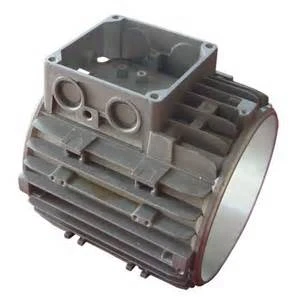Mobile:+86-311-808-126-83
Email:info@ydcastings.com
English
Vortex Impeller Technology | Efficient Fluid Mixing Solutions
Understanding Vortex Impellers A Critical Component in Fluid Dynamics
Vortex impellers are essential components used in various industrial applications to enhance fluid mixing and transport. Their design and functionality have profound implications in fields ranging from chemical engineering to wastewater treatment. The unique characteristics of vortex impellers make them particularly effective in creating a rotational flow that results in the formation of a vortex in the fluid.
At its core, a vortex impeller operates on the principle of fluid dynamics, where the motion of the impeller generates a centrifugal force that draws the fluid toward the center. As the impeller spins, it pushes the liquid outward, creating a low-pressure area at the center. This action not only facilitates the mixing of substances but also promotes the uniform distribution of heat and mass within the fluid. Because vortex impellers induce a consistent flow pattern, they are beneficial in processes requiring thorough mixing and suspension of solids.
One of the primary advantages of utilizing vortex impellers is their ability to handle a wide variety of fluid characteristics
. Whether dealing with viscous liquids or slurries containing solid particles, vortex impellers can be designed to accommodate different operational needs. This versatility makes them valuable in industries such as food processing, pharmaceuticals, and petrochemicals, where process requirements can vary significantly.vortex impeller

Furthermore, vortex impellers exhibit energy efficiency compared to traditional impeller designs. Their streamlined design minimizes turbulence and energy loss, allowing operations to maintain optimal performance while reducing energy costs. This aspect is particularly important in modern industrial settings, where energy savings can lead to substantial cost reductions over time.
Maintenance and longevity are also crucial factors when considering vortex impellers. Typically constructed from durable materials, these impellers can withstand the corrosive and abrasive environments present in many industrial applications. Regular maintenance and proper installation further ensure their efficiency and efficacy, contributing to the overall reliability of the systems they serve.
In summary, vortex impellers represent a significant advancement in the field of fluid dynamics. Their ability to create controlled vortex flow patterns enhances mixing and transport processes across various industries. As organizations continue to prioritize efficiency, sustainability, and cost-effectiveness, the role of vortex impellers will likely expand. Innovations in materials and design may further improve their performance, ensuring they remain a cornerstone in fluid handling technology for years to come. Understanding their operation, advantages, and applications is fundamental for engineers and operators seeking to optimize fluid processes.
-
Materials Used in Manufacturing Cap End Pipe FittingsNewsNov.24,2025
-
Material Properties of CF8M CastingNewsNov.24,2025
-
How to Inspect Pump Cap Ends for DamageNewsNov.21,2025
-
Backward Curved Impeller – Efficient Airflow Solutions for Industry | YD CastingsNewsNov.21,2025
-
Automobile Water Pump - Efficient, Quiet, Durable & ElectricNewsNov.21,2025
-
Impeller for Pumps – High-Efficiency, Durable, OEM-ReadyNewsNov.21,2025











